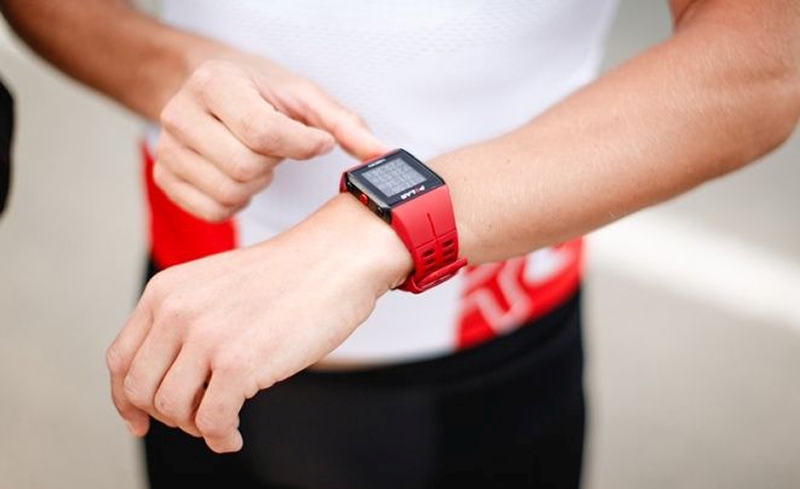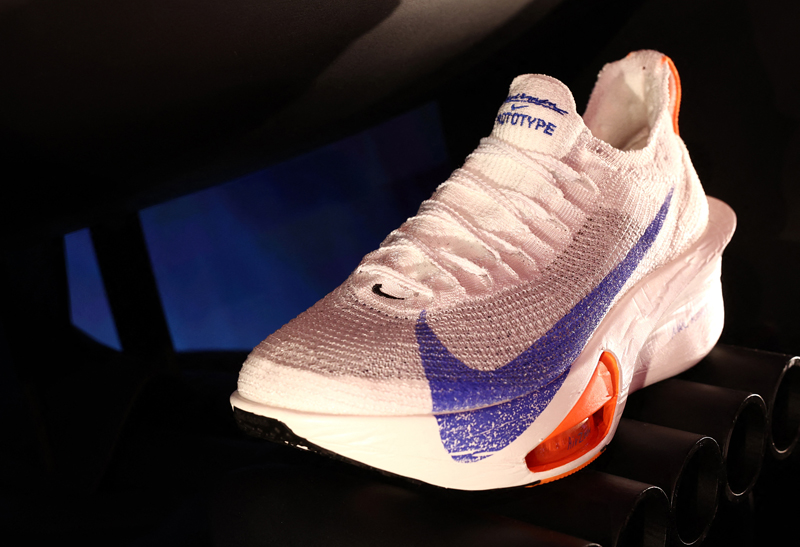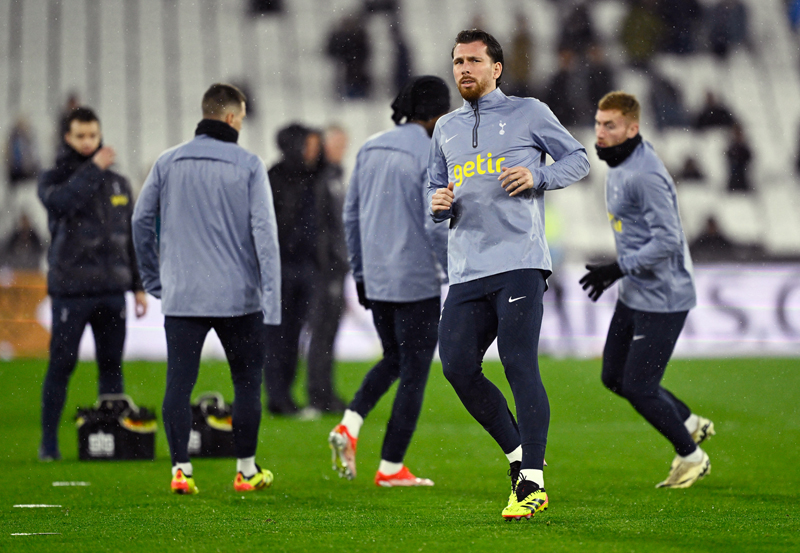In practice, it’s difficult to assess accurately the effect of training on the body. How do you fix your training load? How well is your body adapting to the training? Is there any accumulated fatigue and how much rest do you need for recovery? Other questions that you need to ask are – how do I know I am getting the right training effect? Have I improved? Am I over- or undertraining?
At rest your body system is in balance. To achieve a training effect, you need to disturb this balance by putting the body under an adaptive stress to which it can react. This stress is known as training and your body’s reaction to training is called a training effect.
Traditionally, training zones have been established from fixed formulae. You may be familiar with some of them: using percentage of maximum heart rate or heart rate reserve, percentage of estimated maximum oxygen uptake (VO2max) or estimated VO2max reserve, lactate thresholds or a combination of these variables. Heart rate during training gives information on the momentary intensity of exercise but does not take into account the cumulative effect of exercise duration.
Recent research has focused on the use of heart rate variability (HRV) to assess training load, training adaptation and cumulated fatigue(1) and there are now some commercially available products to assist the serious trainer in using HRV to improve athletic performance.
Polar’s OwnIndex fitness test monitors resting heart rate (RHR) plus HRV to provide an indication of oxygen uptake. The use of HRV measurement by Polar has been further developed with the introduction of the OwnOptimizer feature. This is an overtraining test, which evaluates individual heart rate response to exercise using HRV and enables the user to optimise their training loads and recovery times. Suunto has products that use HRV to assess training load and accumulated fatigue (for a scientifically balanced view of HRV the reader is referred to an excellent review paper ‘Heart Rate Variability in Athletes’(2)).
Whilst innumerable studies have been published concerning training in general, relatively few studies are available on HRV and its application to athletes. Most studies involve small numbers of participants, which diminishes the power of the statistics, although since the review paper, significant progress has been made in the practical use of HRV to monitor fatigue accumulation during exercise.
What is heart rate variability?
Measurement of the beat-to-beat interval of the heart clearly shows that heart rate is not constant but alters from beat to beat. This is known as heart rate variability (HRV). At rest this beat-to-beat interval fluctuates with the breathing cycle – it speeds up during inhalation and slows down during exhalation.
This variation is due to the attenuation of the parasympathetic activity to the heart during inhalation. Heart rate is regulated predominately by the autonomic nervous system (ANS). The ANS describes the nerves that are concerned with regulation of bodily functions and these nerves function without consciousness or volition; the autonomic nerves comprise sympathetic and parasympathetic nerves – sympathetic nerves excite the heart, increasing heart rate, and parasympathetic nerves reduce heart rate.
During exercise, heart rate is regulated by increased sympathetic activity and reduced parasympathetic activity, causing the heart rate to rise. The relative roles of the two activities depend on the exercise intensity. A 1989 study was the first to test this hypothesis, with the data supporting a progressive withdrawal of parasympathetic activity during exercise(3). A number of subsequent studies have concluded that HRV is a valid technique for non-invasive measurement of parasympathetic activity during exercise.
Measurement of HRV involves analysis of the R-R (beat-to-beat) intervals, with the simplest approach calculating the mean R-R interval. By accurately measuring the time interval between heartbeats, the detected variation can be used to measure the psychological and physiological stress and fatigue on the body during training. Generally speaking, the more relaxed and unloaded (free from fatigue) the body is, the more variable the time between heartbeats.
HRV is measured in milliseconds. During exercise HRV is reduced as heart rate rises. When the body is under a training load, HRV becomes more uniform. This data can be used to calculate information about the body during exercise to a high degree of accuracy.
HRV data can indicate the impact of fatigue due to prior exercise sessions, hydration levels, stress and even the degree of performance anxiety, nervousness or other external stressful influences. Studies have shown that it varies within individuals according to size of left ventricle (inherited trait), fitness level, exercise mode (endurance or static training) and skill (economy of exercise)(2). Body position, temperature, humidity, altitude, state of mood, hormonal status, drugs and stimulants all have an effect on heart rate and HRV(2), as do gender and age. The general conclusion is that all of the HRV parameters are higher in men but that this gender difference is confined to men and women below 40-50. There’s also an age-related decrease in HRV, although for elderly athletes with a lifelong training history, this decline is reduced.
How can HRV be used to enhance athletic performance?
Well-timed rest is one of the most important factors of any training programme. The effect of training sessions can be negligible or even detrimental if insufficient rest and recovery is built in. HRV measurements demonstrate a significant and progressive decrease in parasympathetic activity during long-term heavy training, which is followed by an equally significant increase during rest. Sympathetic activity shows the opposite trend(4).
This cardiac autonomic imbalance suggests that HRV is a useful parameter to detect overtraining (a state of overstress caused by an imbalance between training/competition and recovery) and under-recovery in athletes. Immediately after training, performance potential temporarily decreases, but it begins to rise during recovery. After a certain amount of time, performance rises above the pre-training level because the body is preparing to handle the next training load better than before.
If the body does not receive the next training load within a certain period of time any performance gain begins to slowly decrease. However, if the next high-intensity session is held before the body has recovered from the previous one, performance will remain lower than it would have been after full recovery. Continuous hard training with insufficient recovery will slowly lead to lower performance and a long-term state of overtraining. When overtrained, even a long period of recovery may not be enough to return performance to the original level.
The body needs time for recovery after a single high-intensity session, or a hard training period of several days, or even after a low-intensity but long training session. Without rest, adaptation to the training load will not occur. In the worst case, training will lead to exhaustion and overtraining or under-recovery. Additional non-training stress factors and monotony of training may also contribute to overtraining syndrome.
EPOC
Until recently there were no useful methods of monitoring fatigue accumulation during training. Scientists have now demonstrated that excess post-exercise oxygen consumption (EPOC) can be predicted from HRV data recorded during exercise. Consequently, EPOC prediction may serve as a tool for monitoring fatigue accumulation during exercise(6).
EPOC, simply defined, is the amount of oxygen your body needs to recover after a training session and is measured in millilitres of oxygen per kilogram of body weight (ml/kg). EPOC calculated from HRV data is therefore a measure of physiological training load and the accumulated cardiovascular fatigue.
EPOC is most useful to describe the stress caused to the body, especially to the respiratory and cardiovascular system, from endurance activities such as running, cycling, swimming and rowing. During exercise the body consumes more oxygen than at rest. The higher the intensity of training, the greater the fatigue and the more oxygen is consumed during and immediately after the training session. Simply put, a higher EPOC value means that the body is more physiologically tired.
EPOC accumulates faster as training intensity increases but not necessarily when duration is increased, so low-intensity training may not result in a high EPOC value, even if the duration of the training is exceptionally long. With high-intensity training, high EPOC values can be reached even in a short period of time.
Without EPOC as a measure, the wrong conclusions may be drawn from a training session. You may believe that no improvement has occurred or performance has gone backwards, when in reality the difference is fatigue, and actual performance has improved.
At this point it is reasonable to ask the following question: if you can use heart rate as a measure of exercise intensity, why do you need HRV? The simple answer is that during two separate training sessions of equal status one may be harder on the body than the other, even when the heart rate is the same for both sessions. The difference is accumulated fatigue, which HRV can detect and convert into an EPOC value.
The body may appear to recover rapidly from a training session (short-term fatigue) but carry accumulated (long-term) fatigue from training session to training session. This long-term fatigue builds up over time and is one reason why periodised training programmes, which build in easier recovery weeks, are needed. So when comparing sessions using HRV and EPOC, the amount of accumulated fatigue affecting each session can be seen by the difference in EPOC value.
Is there a tool to help athletes to use HRV and EPOC to optimise their training and recovery?
Suunto has developed a heart rate monitor (Suunto t6), which uses an athlete’s unique physiological fingerprint to measure training effect. It looks like a conventional heart rate monitor and uses HRV and EPOC to monitor the amount of stress that the body is experiencing to measure the cumulative fatigue (training effect) of each training session.
Based on accurate measurement of the time interval between heartbeats and the detected variation, the t6 software (run on a PC) calculates information about the performance of the body during training and displays the data in a user-friendly format for analysis. As the data is updated, the Suunto t6 becomes an increasingly precise tool for measuring training performance.
HRV and EPOC in action
HRV and EPOC work well with continuous (rather than interval) type training. At low intensity exercise (40-70% of VO2max) there is a significant correlation between EPOC and blood lactate concentration. At maximal exercise the correlation is low, signifying that other factors such as body temperature and hormonal changes may influence EPOC, fatigue accumulation and recovery during high-intensity exercise(6).
In this particular model there are five levels of EPOC. Recovery from each level is as follows:
- Levels 1 and 2 – 3 hours to 1 day
- Level 3 – 1-2 days
- Level 4 – 1-4 days
- Level 5 – 2-7 days
The way in which the cardiovascular system responds to the stress of exercise continues to intrigue physiologists. Although some understanding of HRV and its application to athletes is becoming clearer, it is still almost an unexplored domain. The significant change is that there is now a commercial product available that athletes can begin to use to monitor this ‘cardiovascular fatigue’ to ensure that their training programmes include the right mix of duration, frequency, intensity, rest and recovery. HRV and EPOC can be used to monitor individual sessions, allowing the athlete and coach to react immediately to the output data by either amending subsequent training to deal with accumulated fatigue or ensuring that the athlete has sufficient rest to make an adequate recovery.
Eddie Fletcher MSc is a sport and exercise physiologist and coach specialising in endurance events. He is also author of the ‘Suunto Indoor Rowing Guide’ and acts as an ambassador for Suunto in the UK
References:
1. Med Sci Sports Exerc 2000; 32(10):1729-1736
2. Sports Med 2003; 33(12):889-919
3. Am J Physiol 1989; 256(1 Pt 2):H132-141
4. Int J Sports Med 2000; 21/1:45-53
5. Med Sci Sports Exerc 2001; 33(7):1120-1125
6. Med Sci Sports Exerc 2003; 35(5):Supp, 1 May p S183










